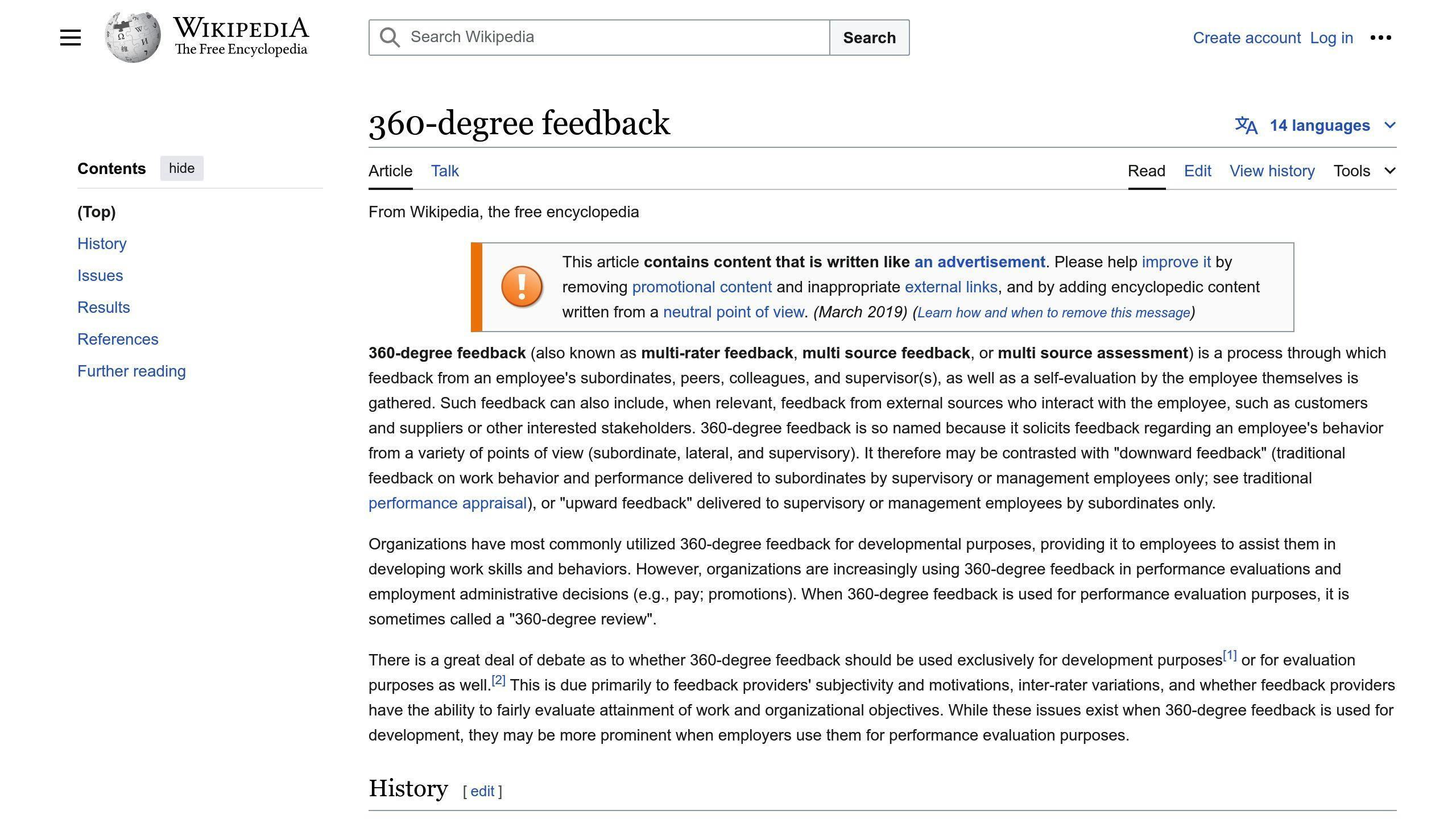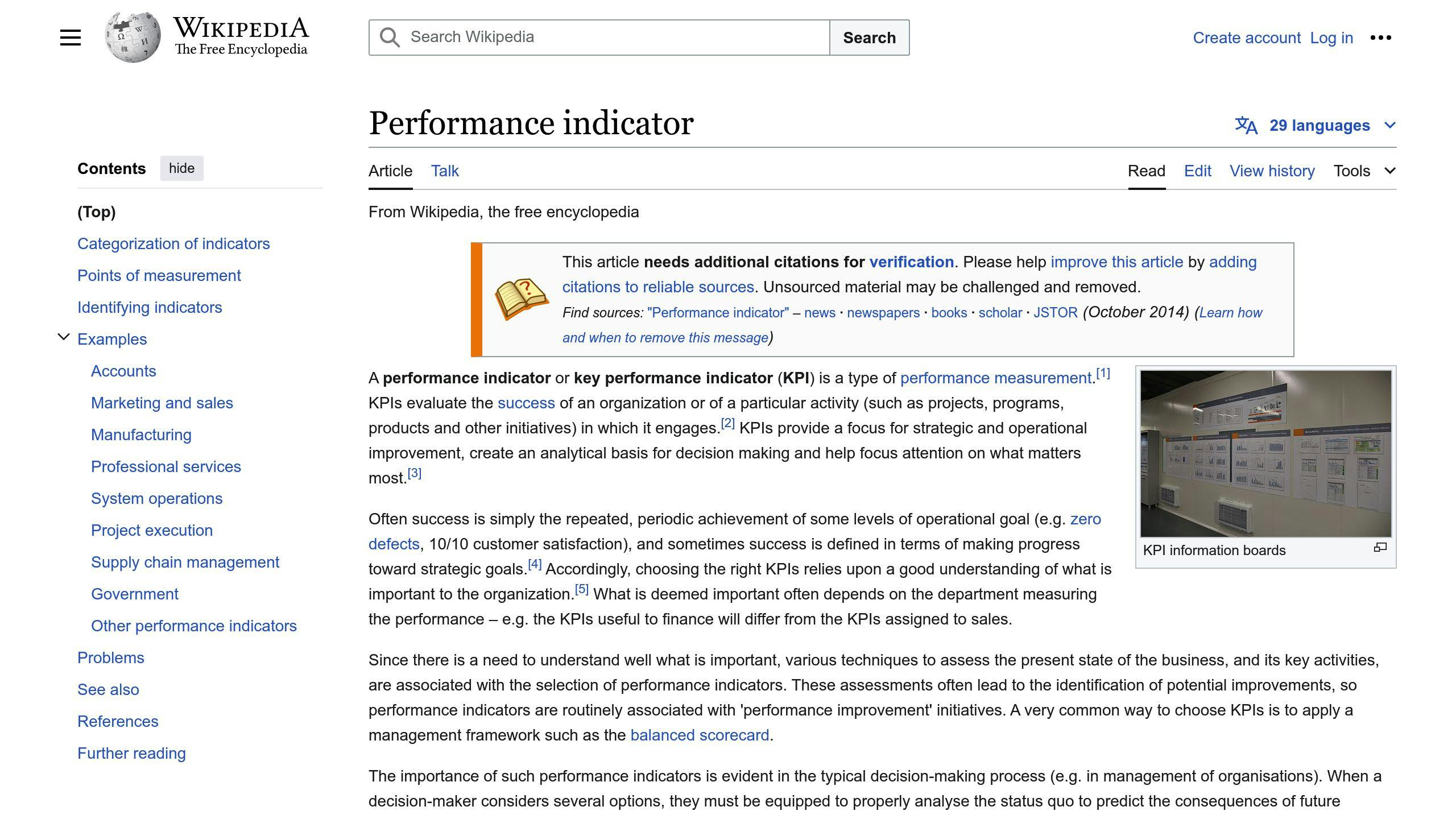Regular board evaluations are crucial for organizational success and improvement. They assess the board's effectiveness, decision-making, strategy, and relationship with executive management. By conducting evaluations, boards demonstrate their commitment to transparency, good governance, and high standards.
Related video from YouTube
Key Benefits of Board Evaluations:
- Assure employees and investors that directors prioritize the company's performance and stakeholders
- Help the board operate as an effective team, enhancing business success
- Identify weaknesses and provide recommendations to improve governance and decision-making
10 Best Practices for Effective Board Evaluations:
- Set clear goals and criteria
- Involve all stakeholders
- Ensure confidentiality and anonymity
- Use multiple evaluation methods (self-assessments, peer evaluations, 360-degree feedback, external evaluations)
- Include diversity and inclusion metrics
- Use digital tools
- Provide actionable feedback
- Foster continuous improvement
- Align with strategic goals
- Involve external experts
Tools and Techniques for Board Evaluations:
| Tool | Description |
|---|---|
| Self-Assessment Questionnaires | Board members reflect on their performance and identify areas for improvement |
| Peer-to-Peer Evaluations | Board members assess each other's performance, providing insights into individual strengths and weaknesses |
| 360-Degree Feedback | Feedback from various stakeholders, including board members, executives, employees, and external partners |
| Board Observation | An external observer attends board meetings to provide insights into board dynamics and effectiveness |
| Key Performance Indicators (KPIs) | Measurable targets used to evaluate the board's performance against specific objectives |
| Digital Evaluation Platforms | Platforms that facilitate anonymous surveys, data analysis, real-time feedback, and progress tracking |
Conducting board evaluations regularly and following best practices is vital for ensuring the board functions effectively and stays accountable. By evaluating regularly, boards demonstrate their commitment to excellence and transparency, which can boost stakeholder confidence and trust.
10 Best Practices for Effective Board Evaluations
1. Set Clear Goals and Criteria
Before starting a board evaluation, establish clear goals and criteria. This ensures the process is focused and effective. The goals should be specific and measurable. For instance, the goal could be to assess the board's performance in strategy development or risk management. The criteria should align with the organization's objectives and principles.
2. Involve All Stakeholders
Board evaluations should involve board members, executive management, and external experts. This provides a comprehensive understanding of the board's performance and areas for improvement. Stakeholders offer valuable insights into the board's strengths and weaknesses.
3. Ensure Confidentiality and Anonymity
To encourage honest feedback, maintain confidentiality and anonymity throughout the evaluation process. Use anonymous surveys, interviews, or focus groups. Confidentiality ensures stakeholders feel comfortable sharing opinions without fear.
4. Use Multiple Evaluation Methods
Combine different evaluation methods for a comprehensive understanding of the board's performance. These methods include:
- Self-assessments: Board members evaluate their own performance.
- Peer evaluations: Board members evaluate each other.
- 360-degree feedback: Feedback from multiple sources, including board members, executive management, and external stakeholders.
- External evaluations: Evaluations conducted by external experts.
5. Include Diversity and Inclusion Metrics
Evaluate the board's diversity and inclusion practices. Assess the board's composition, diversity of perspectives, and inclusivity. These metrics help identify gaps and opportunities for improvement, promoting an inclusive and effective board.
6. Use Digital Tools
Digital tools and platforms can streamline the evaluation process, enhance objectivity, and reduce costs. These tools facilitate anonymous surveys, automate data analysis, and provide real-time feedback. They also help track progress and monitor the board's performance over time.
7. Provide Actionable Feedback
The evaluation process should provide specific, objective, and actionable feedback that the board can use to improve its performance. The feedback should include clear recommendations for improvement. The board should establish a process for implementing the feedback and tracking progress.
8. Foster Continuous Improvement
Board evaluations should promote a culture of continuous improvement. Encourage open communication, experimentation, and calculated risk-taking to drive improvement.
9. Align with Strategic Goals
Align the evaluation process with the organization's strategic goals and objectives. Evaluate the board's performance in the context of the organization's overall strategy and direction.
10. Involve External Experts
Involve external experts to bring objectivity and fresh perspectives to the evaluation process. External experts provide specialized knowledge, expertise, and best practices to enhance the board's effectiveness. They can also identify areas for improvement and provide recommendations.
sbb-itb-d1a6c90
Tools and Techniques for Board Evaluations
Here are some tools and techniques used for conducting effective board evaluations:
Self-Assessment Questionnaires
Board members complete questionnaires to reflect on their performance and identify areas for improvement. These questionnaires cover aspects like strategic planning, financial oversight, and board effectiveness. Self-assessments help boards understand their strengths and weaknesses, and develop strategies for improvement.
Peer-to-Peer Evaluations
Board members assess each other's performance, providing insights into individual strengths and weaknesses. This method encourages open communication, accountability, and helps identify areas where members may need support or training. Peer-to-peer evaluations can be conducted through surveys, interviews, or focus groups, facilitated by an external expert or a designated board member.
360-Degree Feedback

Feedback is gathered from various stakeholders, including board members, executives, employees, and external partners. This approach provides a comprehensive view of the board's performance from different perspectives. 360-degree feedback helps boards understand their strengths and weaknesses, and develop targeted improvement strategies.
Board Observation
An external observer attends board meetings to provide insights into board dynamics and effectiveness. This technique can help identify areas for improvement, such as communication patterns, decision-making processes, and meeting facilitation. Board observation can be useful for new boards or those experiencing significant changes in membership or leadership.
Key Performance Indicators (KPIs)

KPIs are measurable targets used to evaluate the board's performance against specific objectives. KPIs can be tailored to the organization's strategic goals and help boards track progress over time. By using KPIs, boards can focus on achieving specific outcomes, rather than simply fulfilling governance responsibilities.
Digital Evaluation Platforms
| Platform | Features | Benefits |
|---|---|---|
| Aprio | Anonymous surveys, data analysis, real-time feedback | Enhances objectivity, reduces costs, tracks progress |
| BoardOutlook | Customizable questionnaires, peer-to-peer evaluations, 360-degree feedback | Provides comprehensive view of board performance, fosters accountability |
| Evalia | Digital surveys, automated reporting, benchmarking | Streamlines evaluation process, enhances decision-making |
Digital evaluation platforms streamline the board evaluation process, enhancing objectivity and reducing costs. These platforms facilitate anonymous surveys, automate data analysis, and provide real-time feedback. They also help track progress and monitor the board's performance over time.
Creating an Effective Evaluation Process
Establishing an effective board evaluation process is crucial for ensuring the board operates efficiently. A well-structured process helps identify areas for improvement, promotes accountability, and fosters continuous learning.
Define Scope and Frequency
To create an effective process, define the scope and frequency of the evaluation:
- Scope: Cover all aspects of the board's performance, including governance, financial oversight, strategic planning, and risk management.
- Frequency: Conduct evaluations annually or bi-annually, based on the board's needs and goals.
Establish a Clear Process
Establish a clear, transparent process with:
- Defined roles and responsibilities for all board members
- Systematic approach with clear criteria and metrics
- Understanding of the process by all members
Ensure Fairness and Confidentiality
Maintain fairness and confidentiality by:
- Providing equal opportunity for all members to give feedback
- Keeping feedback confidential
- Using anonymous surveys and confidential interviews
| Approach | Purpose |
|---|---|
| Anonymous Surveys | Allow board members to provide feedback confidentially |
| Confidential Interviews | Enable open and honest discussions without fear of repercussions |
A fair and confidential process encourages honest feedback, leading to a more effective evaluation.
Implementing Evaluation Recommendations
Developing Action Plans
After the evaluation, create clear action plans to address areas needing improvement. These plans should:
- Set specific, measurable goals with target dates
- Assign responsibilities to board members and staff
- Allocate necessary resources and budget
Providing Training
Ongoing training helps board members enhance their skills and effectiveness. The board should:
- Identify areas where members need more training
- Provide access to relevant training programs or workshops
- Encourage members to share expertise and experiences
- Foster a culture of continuous learning
Adjusting Board Composition
Evaluation results may show the need to adjust the board's composition. The board should:
| Action | Purpose |
|---|---|
| Identify skill gaps | Ensure the board has the necessary expertise |
| Recruit new members | Bring in needed skills and perspectives |
| Consider diversity | Promote diverse viewpoints and backgrounds |
| Align composition | Ensure the board aligns with strategic goals |
Measuring Evaluation Impact
Tracking the effectiveness of board evaluations is crucial to understand their impact and identify areas for improvement. This section explores techniques to monitor and measure the impact of board evaluations on board performance.
Tracking Progress
To track progress, follow these steps:
- Set clear, measurable goals and objectives
- Establish key performance indicators (KPIs) to monitor progress
- Regularly review progress against goals and KPIs
- Identify areas needing improvement and create action plans
Monitoring Board Performance
Monitor board performance by:
| Action | Purpose |
|---|---|
| Observe board dynamics and behavior | Note changes after evaluations |
| Review meeting minutes and discussions | Analyze board interactions |
| Conduct surveys and feedback sessions | Gather input from board members |
| Identify areas for improvement | Develop strategies to address issues |
Gathering Stakeholder Feedback
Gather feedback from stakeholders:
1. Conduct surveys and feedback sessions with: - Shareholders - Employees - Customers
2. Analyze feedback to identify areas for improvement
3. Develop action plans to address stakeholder concerns
4. Regularly review progress against stakeholder feedback
Conclusion
Regular Evaluations Are Key
Conducting board evaluations regularly is vital for ensuring the board functions effectively and stays accountable. These evaluations give the board a chance to reflect on its performance, identify areas needing improvement, and make necessary changes to enhance its governance and decision-making processes. By evaluating regularly, boards demonstrate their commitment to excellence and transparency, which can boost stakeholder confidence and trust.
Follow Best Practices and Use Helpful Tools
To get the most out of board evaluations, it's important to follow best practices and use tools that facilitate a thorough and effective evaluation process. By following the guidelines and recommendations outlined in this article, boards can create an environment of continuous improvement, foster a high-performing team, and ultimately drive their organization's success. Remember, board evaluations are not a one-time event but an ongoing process that requires dedication, commitment, and a willingness to adapt.
| Benefit | Description |
|---|---|
| Continuous Improvement | Evaluations promote a culture of ongoing learning and growth. |
| High-Performing Team | They help the board operate as an effective, cohesive unit. |
| Organizational Success | Evaluations contribute to the overall success of the organization. |
Key Takeaways
- Conduct board evaluations regularly, at least annually or bi-annually.
- Implement best practices for a thorough and effective evaluation process.
- Utilize tools and techniques like self-assessments, peer evaluations, 360-degree feedback, and digital platforms to streamline the process.
- Create a clear action plan to address areas needing improvement.
- Provide training and adjust board composition as needed.
- Track progress and measure the impact of evaluations on board performance.
- Gather feedback from stakeholders and address their concerns.
FAQs
How should board directors evaluate themselves?
Board directors should look inward at the board itself, reflect on their individual and shared duties, identify differing views among members, determine areas needing attention, and use the results to improve the board.
How to conduct a board assessment?
To assess the board, outline the process, appoint a lead, identify topics, send a post-evaluation summary, and consider partnering with an external party.
What are board evaluation tools?
Board evaluation tools make it easier to create, collect, and analyze self-assessments of individual board members and peer evaluations. They often include structured questionnaires, customization options, and secure data collection and reporting.
| Tool Features | Benefits |
|---|---|
| Structured questionnaires | Standardized approach |
| Customization options | Tailored to specific needs |
| Secure data collection | Confidentiality maintained |
| Reporting capabilities | Clear insights and analysis |


